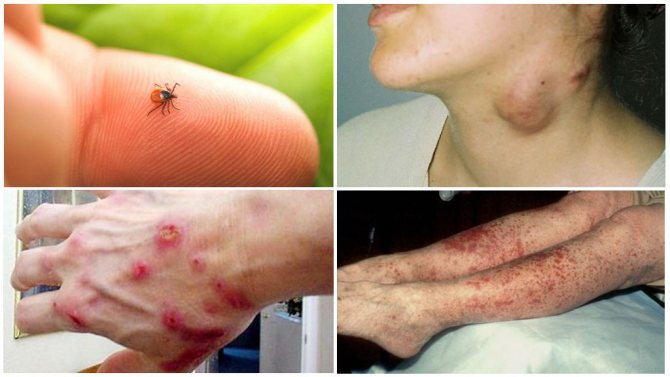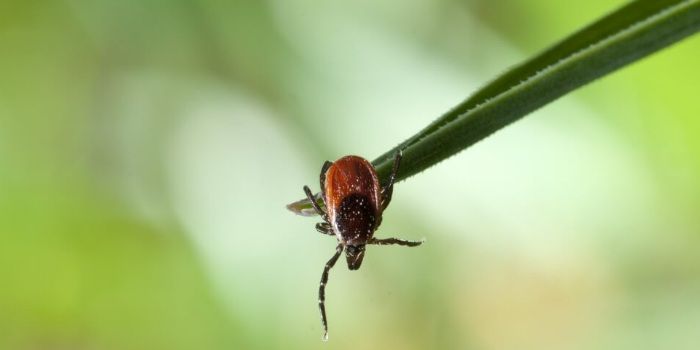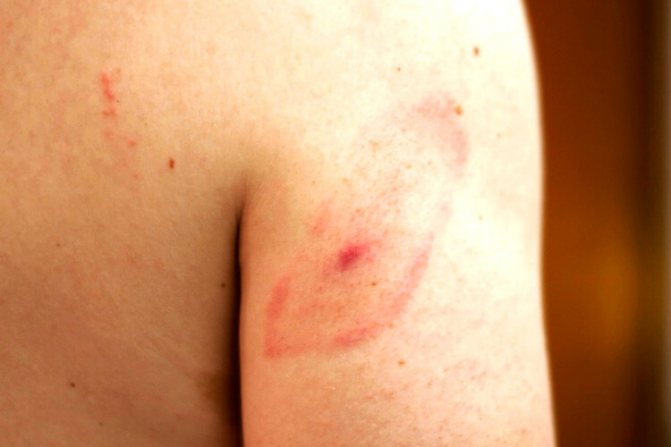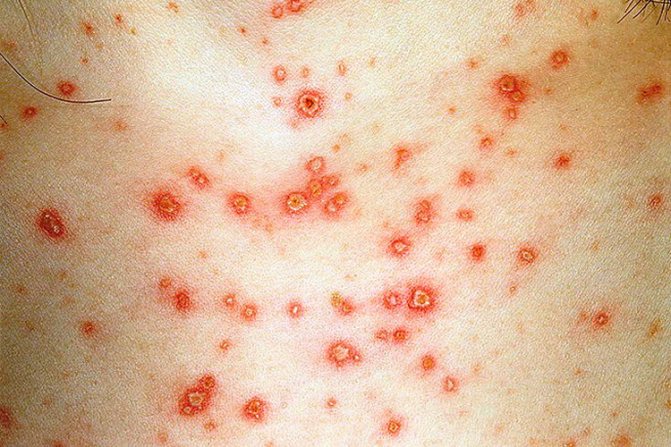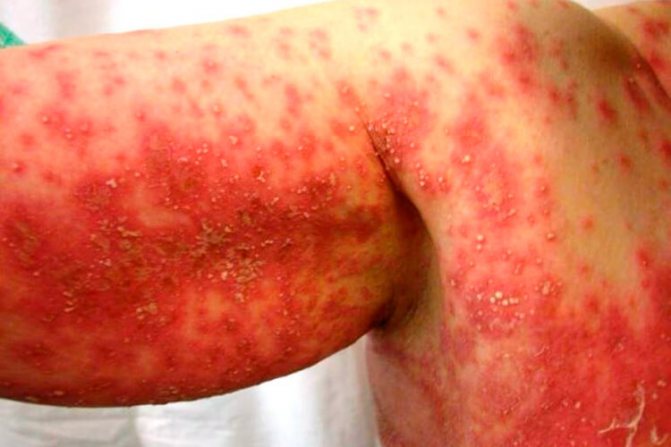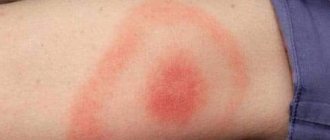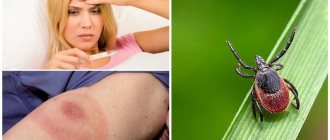To date, scientists have been able to identify more than 50 thousand species of ticks. Moreover, many of them are carriers of diseases. This means that such insects pose a great danger to humans. After all, contact with them can easily end with the occurrence of an infectious disease, which will require timely medical treatment. Otherwise, complications, disability and even death are possible in some cases.
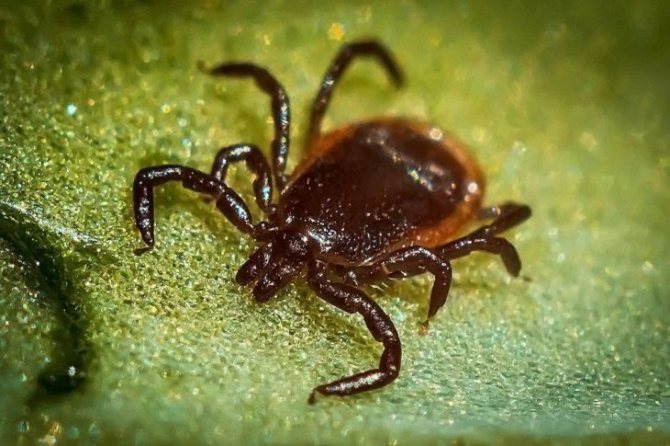
taiga tick
However, don't panic. In this article, we will tell you how these arthropods can infect you, what kind of diseases they carry and what you need to do to protect yourself and your health from these parasites.
general information
It should be said that ticks are carriers of infections, which include a variety of pathogenic microorganisms, such as bacteria, viruses, rickettsiae, etc. Scientists know about 15 diseases carried by parasites in Europe. Of this number, 7 diseases affect humans.
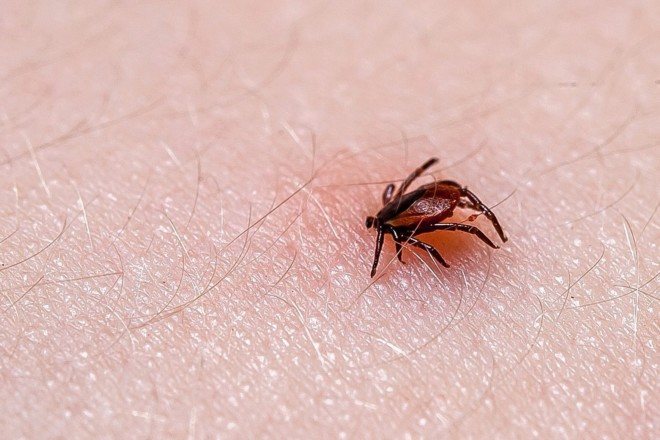

If we talk about the most common diseases that people face after a tick attack, then these include encephalitis, Lyme disease and ehrlichiosis. A person suffers these infections very hard, without proper treatment, they lead to irreparable consequences, disability. The rehabilitation course is quite long and can last for a year. In addition, they can transmit tick-borne typhus, babesiosis, fever, tularemia. Each disease has its own symptoms and is distinguished by the pathological processes that occur in the body.
Where do parasite infections come from?
Ticks are insects ranging in size from 0.4 to 1 cm, which belong to the class of arachnids. Science knows about 48 thousand species of ticks, and they live in almost all climatic zones. Most of them feed on plant foods and decaying organic matter, but there are varieties that parasitize warm-blooded creatures and suck their blood. Such ticks can be infected with various diseases, after being bitten by a person or animal, they transmit their pathogens along with saliva.
Tick infection occurs even in the infant stage, which in insects is called nymphal... Nymphs, or babies of these insects, are small in size and cannot move long distances, therefore they mainly bite birds and rodents - the most common carriers of infectious diseases. During the bite, pathogenic microorganisms enter the body of the parasite and remain there - accordingly, when the tick enters the adult stage, it becomes dangerous for its victims, since it can transmit the infection along with saliva.


Types of insects that carry infectious ailments
The most dangerous are ixodid ticks that transmit infections and diseases to humans, including:
- dog tick - is the main vector of encephalitis disease in Europe;
- the taiga species lives mainly in forests and also carries pathogens such as encephalitis;
- the Australian tick is found in Australia and is capable of releasing a neurotoxin when bitten, which causes paralysis in humans;
- mites of the genus chialomma, which can "reward" the victim with hemorrhagic fever.
In total, there are about 14 species of ticks that are most dangerous to humans, and are popularly called encephalitis. Not all parasites transmit infection - some of them are sterile, but an infected tick can only be recognized after an appropriate analysis has been carried out... Next, consider what diseases people carry.
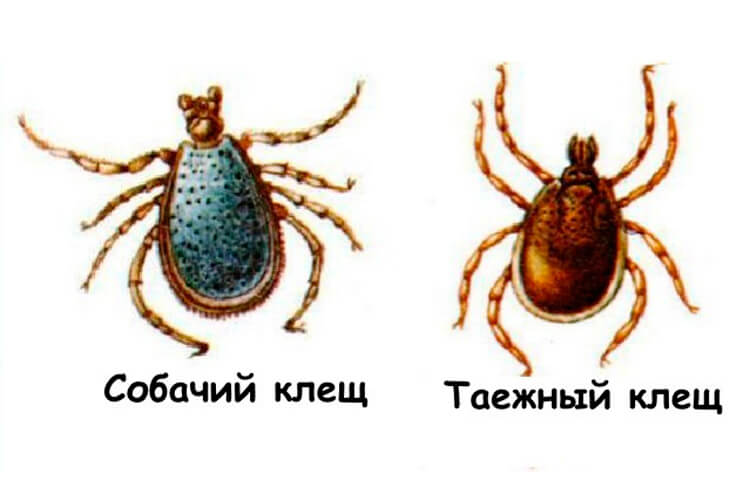

IMPORTANT! Many species of ticks do not tolerate infectious diseases, but they can still cause serious harm to human health. Barn, bed and dust parasites cause allergic reactions that cause itching and rashes, and in severe cases can lead to bronchial asthma in humans.
What symptoms should you pay attention to?
Symptoms appear depending on what kind of infection has entered the human body. It should be borne in mind that there is an incubation period during which the disease develops, but the symptoms do not appear. If you find a tick on your body, it would be correct to contact a medical institution, than you will protect yourself. You can always meet an infectious parasite in nature, and although the chance of contracting an infection is small, it is always present.
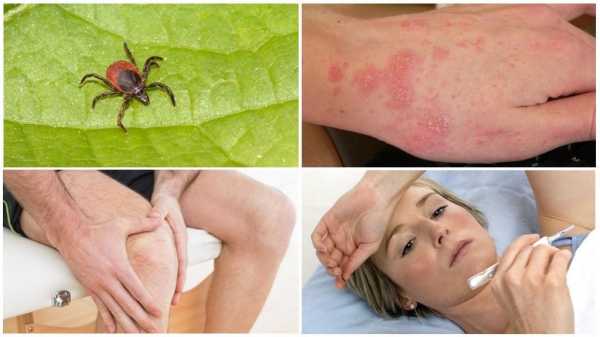

So, if you are faced with such a problem, you should always monitor your health and, at the slightest manifestation of symptoms, immediately consult a doctor:
- Lyme disease. An inflamed circle with a red outline appears on the body where the bite occurred. A person feels unwell, weakness, body temperature rises. Nausea, vomiting, stiffness and muscle pain also appear.
- Tick-borne encephalitis. The first symptom is an increase in body temperature to 38-39 ° C. Muscles begin to ache, headache, nausea, vomiting appear. As the disease progresses, meningeal syndrome appears.
- Ehrlichiosis. The temperature also rises. The person has a fever. General malaise, muscle pain. A rash appears on the body. Disorders, vomiting, abdominal pain are observed.
- Tick-borne typhus. Most often, symptoms appear 2 weeks after the attack of the parasite. Headache appears and body temperature rises. A person feels weak, appetite decreases, insomnia begins. Quite often, the above symptoms are accompanied by a rash and skin irritation.
Tick activity in Russia
The largest percentage of ticks infected with pathogens of dangerous infections occurs in endemic areas. Ectoparasites inhabit mixed and deciduous forests, as well as other ecosystems with high humidity and comfortable air temperatures.
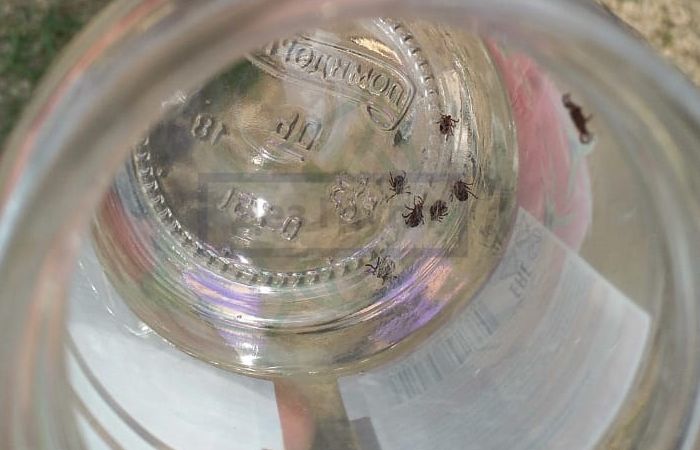

The activity of ticks in Russia in different regions is predicted every year, taking into account data for the past period and climatic features. The geography of distribution of encephalitis and borreliosis ticks practically does not change over time. Endemic territories for tick-borne encephalitis in Russia are found in almost every district - Central, North-West, South, Volga, Ural, Siberian, Far East. A specific list of subjects is presented on the Rospotrebnadzor website.
Recommended links
Tick activity by regions of Russia in 2020 - see the map here.
How to prevent a bite
In nature, it is necessary to dress correctly in order to protect yourself as much as possible and limit access to it for ticks. Wear long-sleeved pants and a sweater, with your feet covered with shoes. Use hats. Avoid thickets, walk along well-trodden paths, and have picnics in the open.


Remember that there are a large number of repellents that are designed to protect against parasites. They are very simple and convenient to use and are able to protect as much as possible from an attack.The most popular are Biban, Akrozol, Gal-ret and others. Also, many use acaricidal agents, for example, Permanon, Pretix and others.
Rocky Mountain spotted fever
Rocky Mountain spotted fever is a disease endemic to the New World, that is, all cases of it were recorded only in the Americas, most often in the United States, less often in Brazil, Colombia and Canada. It is caused by rickettsia of the species Rickettsia rickettsii, the natural reservoir of which is wild animals and is carried by ticks.
It is interesting
The disease got its name from the place of registration of the first epidemic in Montana in the foothills of the Rocky Mountains.
The disease is extremely dangerous for humans. Even with a favorable course, it causes the appearance of numerous hemorrhages, in the places of which skin necrosis with gangrene can develop. The acute phase is very difficult for a patient with high fever, bloody vomiting and diarrhea.
Before the advent of antibiotics, the case fatality rate for Rocky Mountain fever exceeded 30%. Today it is successfully treated with doxycycline, but even with modern methods and means, the mortality rate of the disease is 5.2% (every twentieth sick person dies), and many seriously ill patients lose their hearing.
What you need to know
If you have been bitten by a parasite, you can find out whether it is a carrier of any dangerous disease almost immediately, without waiting for the manifestation of symptoms. Considering that some infections have a long incubation period, and some can last for a long time, without showing themselves in any way, then for your safety it is necessary to submit the parasite for research.
To do this, you need to carefully pull the tick out of the wound, put it in an airtight container and hand it over to the laboratory for further research. Remember that if you get a parasite yourself, you need to pick it up so that it does not burst.
Such actions allow you to find out if an individual is infected, take the necessary treatment and avoid serious consequences. If for some reason it is impossible to take the tick for research, you should consult a doctor who will give recommendations on the following actions. It makes no sense to take tests on a person immediately after an attack, since during the incubation period they will not show the presence of an infection in the body.
Treatment
To prevent the development of tick-borne infections, immediately after a bite, patients are injected with immunoglobulins - drugs isolated from human blood serum that bind viruses and remove them from the body. Such treatment can only be carried out during the first 96 hours after the attack of the parasite - in the future it becomes inappropriate and even dangerous.
If symptoms of tick-borne infections appear, the patient should be admitted to a hospital and appropriate measures should be taken immediately. Most diseases that ticks carry are treated with antibiotics., as a rule, drugs from the tetracyclines series. Additional treatment depends on the characteristics of the clinical course of the disease and accompanying symptoms - steroid hormones, anti-inflammatory drugs, pain relievers, immunomodulators and vitamins are used.
In severe cases, resuscitation measures are taken to restore breathing and cardiac activity, blood transfusions and surgical interventions. The prognosis depends on the general condition of the patient's body, the clinical course and neglect of the pathological process - if therapy was started at later stages, the risk of serious complications, disability and death increases significantly.
There are drugs that replace the vaccine
Unfortunately, there are currently no such drugs.Moreover, the introduction of immunoglobulins after a tick bite in some cases leads to a worsening of the patient's condition.
There are pills actively promoted by manufacturers, supposedly completely eliminating the virus that got into the blood when bitten. According to experts, these drugs do not provide the claimed effect, and unfair advertising creates a life-threatening delusion among buyers.


A source:
Babesiosis
This is a fairly rare disease. A person can become infected only if he is bitten by a moose tick. This disease can also be called insidious. This is due to the fact that the disease is not always accompanied by noticeable symptoms. But even those symptoms that appear, patients can be confused with mild malaise.
- Lack of appetite.
- Fatigue.
- Mild fever. The state appears and disappears.
- Myalgia.
An effective treatment for babesiosis is therapy with strong antibiotics.
Tick-borne relapsing fever (tick-borne spirochetosis)
An acute infectious disease transmitted through the bites of argas ticks. The causative agent of the pathology is borrelia. The disease is common on all continents except Antarctica and Australia. On the territory of the Russian Federation, it is found in the North Caucasus.
The incubation period is approximately 15 days, but it can fluctuate in one direction or the other. At the site of the bite, hyperemia and swelling are formed, as well as a nodule of 1–2 mm. After another 3-5 days, the ring turns pale and gradually disappears. The papule itself turns pink and remains in this form for up to 4 weeks.


After 24 hours from the bite, a crimson-red papule appears, which is surrounded by a dark hemorrhagic ring up to 30 cm in diameter
The bitten wound begins to itch strongly, as a result, secondary infections can join and ulcers that do not heal for a long time appear. The general body temperature rises sharply, there is pronounced weakness, headache and joint pain, thirst. During fever, some people experience delirium and loss of consciousness.
After 3-4 days of fever there is a drop in temperature, and then a new jump. Such repetitions can be from 10 to 20, and the time between them is from 7-10 minutes to several hours. To identify pathology, a general and biological blood test is done at the peak of the attack, as well as in a febrile period.
Additional diagnostic methods are PCR tests, serological studies, the reaction of loading spirochetes with platelets, complement binding, precipitation. Treatment includes taking antibacterial drugs, as well as eliminating unpleasant symptoms with antipyretic, pain relievers.
Attention! Different therapy is prescribed for each disease. Antibiotics, antipyretics and NSAIDs are prescribed to each individually based on the causative agents of the disease and the patient's condition.
Tularemia
Tularemia is a disease that is widespread throughout the northern hemisphere of the planet and mainly affects wild mammals, most of all rodents. It can occur in various forms, including the so-called "bubonic" with the appearance of characteristic blister-like formations on the skin. In this form, it is also called the "little bubonic plague", and the prefix "small" is used to indicate the lesser danger of tularemia compared to the plague.
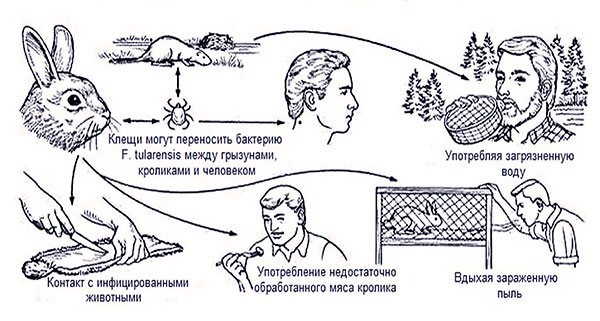

Ways of tularemia infection.
It is interesting
Tularemia was discovered precisely in the study of natural foci of plague, when clearly infected ground squirrels and voles were examined, but the causative agent of the plague was not identified in them. A closer study made it possible to find in them a microorganism unknown at that time, which was subsequently well studied, was named Francisella tularensis and is described precisely as the causative agent of tularemia.
In Russia, tularemia occurs in all regions, and outbreaks of the disease occur regularly in some places.The most widespread of these in this century occurred in 2005, when the disease was diagnosed in several hundred people. It is associated with the abolition of mass vaccination of the population against tularemia.
The disease can occur in different forms, which greatly complicates its diagnosis. Anginal, bubonic, intestinal, pulmonary, conjunctival, generalized (the most dangerous) and other forms of the disease are described. For any course of the patient with tularemia, it is necessary to be hospitalized with isolation from other patients. Treatment is with antibiotics.
Tularemia is not an obligate vector-borne disease. It can be transmitted by airborne droplets and contact, through contaminated water and food, as well as through blood-sucking insects and ticks. Such a variety of ways of its transmission is associated with the highest resistance of the pathogen to adverse environmental factors - francisella survives for months in ice and in frozen meat, in the skins of dead animals, in water, soil and food. Therefore, in general, the likelihood of contracting it from ticks is not so high - more often people become infected in other ways.
Marseilles fever
This disease is very close to Rocky Mountain spotted fever. It is also a rickettsia disease caused by Rickettsia conorii and resembles a mild version of Rocky Mountain Fever in clinical presentation.


Rickettsia conorii bacteria in a blood smear.
On a note
Previously, Marseilles fever was called Tunisian endemic typhus - outwardly, the rash with it looks like typhoid, and the first description of this disease was made in Tunisia.
The natural reservoir of the Marseilles fever is a variety of wild animals, mainly canines. Its main carrier is the dog tick. It is noteworthy that in Europe it is not recorded in the entire habitat of this tick, but only in warm regions around the Mediterranean and Black Seas. Outside Europe, Marseilles fever is widespread in India, Southeast Africa and Central Asia.
The disease is relatively difficult, but very rarely accompanied by dangerous consequences. Most patients recover with the formation of a stable lifelong immunity, effective against other rickettsioses. For example, a person who has had Marseilles fever will no longer be infected with Rocky Mountain spotted fever.
Marseilles fever is relatively easy to treat with tetracycline antibiotics. After the start of their intake, the person's condition rapidly normalizes and on the second or third day the fever ends, although spots and a rash on the skin remain for some time.
Prevention of dangerous diseases
Knowing what infections are carried by bloodsuckers, it is enough to follow some rules to avoid contact with them:
- wear light-colored clothing for the early detection of a stuck tick;
- tuck pants into socks, sweater into pants, etc. The head must be covered with a scarf or hat, and there are cuffs on the sleeves. So it will be difficult for bloodsuckers to get to the body;
- use means that repel and destroy insects.
It is better to stop on vacation away from the paths by making a flooring of dense fabric. Ticks live in the grass, so you should follow the recommendations. It is best to inspect clothing every 15–20 minutes.
Upon arrival home, the last thorough examination of things should be carried out (it is better to wash them at a temperature of 90 degrees) and the surface of the skin. When detected, the bloodsucker is removed with leisurely movements so as not to tear off his head.
Hemorrhagic fever
The name "hemorrhagic fever" refers to several diseases caused by different pathogens, but proceeding with approximately similar symptoms: after a severe fever, the patient develops numerous hemorrhages on the skin and mucous membranes. These hemorrhages can appear as pimples, rashes, large blemishes, or bruises.
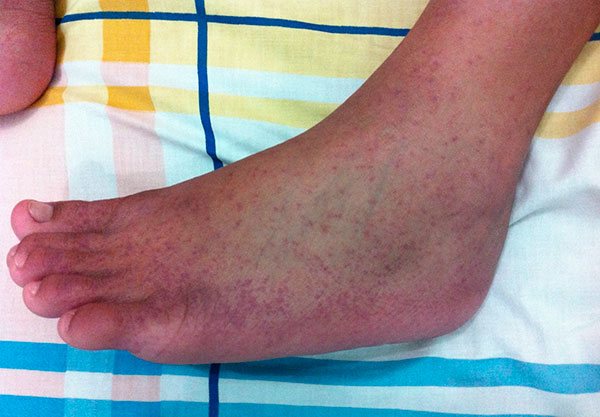

A sign of hemorrhagic fever is hemorrhage on the skin.
Intoxication of the body leads to vomiting, diarrhea, abdominal pain, in women - to uterine bleeding. Normally, after 10-12 days, the fever weakens, but even up to a month, the patient may be severely weakened.
In rare cases, patients with hemorrhagic fever develop sepsis, leading to death. The overall mortality rate of the disease is 4-5%.
All hemorrhagic fevers are caused by viruses. At the same time, there are not so many among them carried by ticks:
- Crimean-Congo fever, notable for the fact that it was described as two different diseases from the Crimea and from Central Africa, and then the researchers found that the causative agent both there and there is the same virus;
- Omsk hemorrhagic fever, widespread in the forest-steppe areas of the Omsk, Orenburg, Novosibirsk, Tyumen and Kurgan regions.
On average, 50-100 cases of Crimea-Congo fever and up to 200 cases of Omsk hemorrhagic fever are reported annually in Russia. Both diseases are quite difficult, but in most cases they end in full recovery. Etiotropic treatment does not exist today; patients are prescribed medications to relieve symptoms and general strengthening therapy.


